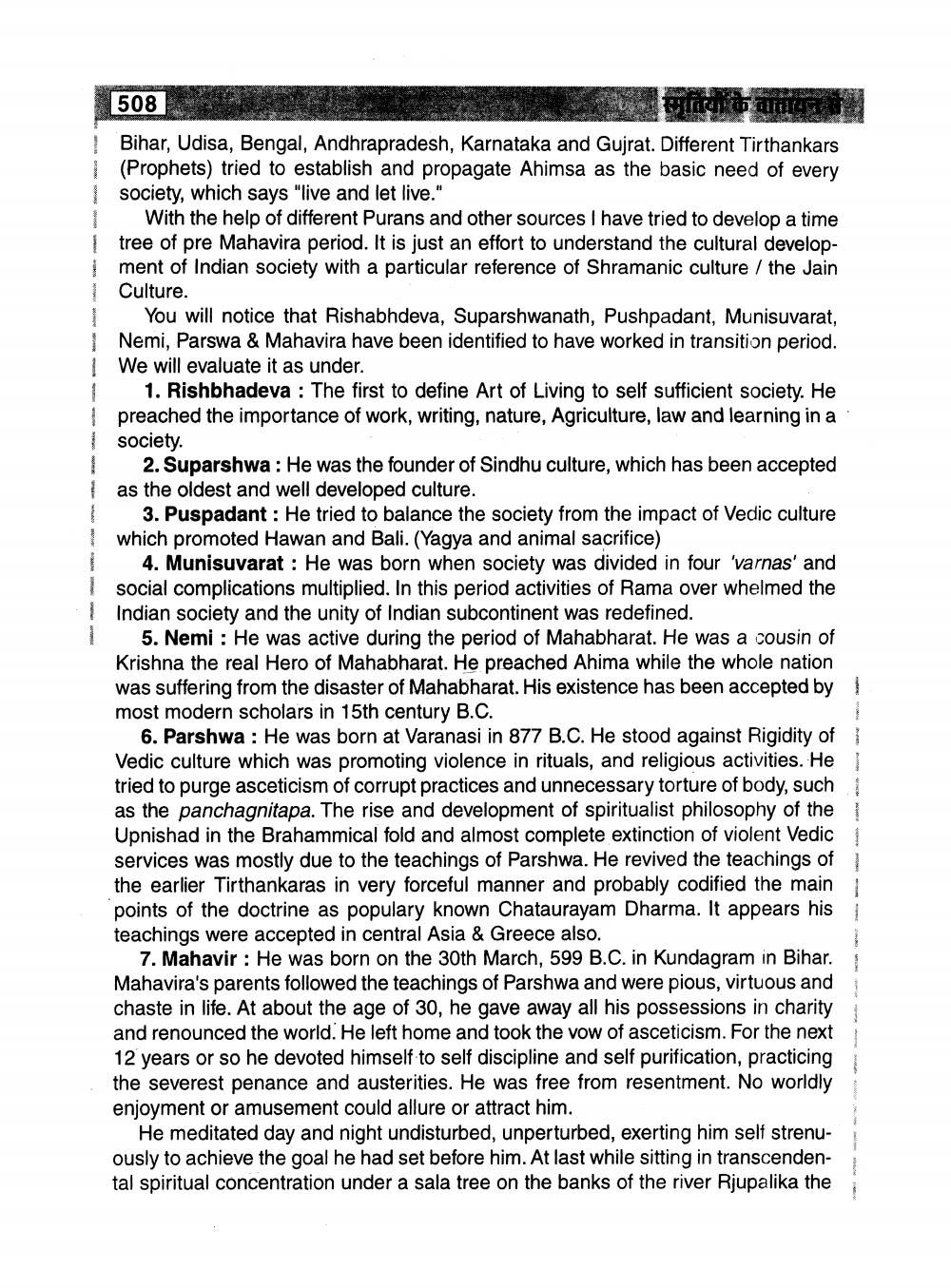________________
508
स्मृतियों के वातायन से
Bihar, Udisa, Bengal, Andhrapradesh, Karnataka and Gujrat. Different Tirthankars (Prophets) tried to establish and propagate Ahimsa as the basic need of every society, which says "live and let live."
With the help of different Purans and other sources I have tried to develop a time tree of pre Mahavira period. It is just an effort to understand the cultural develop. ment of Indian society with a particular reference of Shramanic culture / the Jain Culture.
1
You will notice that Rishabhdeva, Suparshwanath, Pushpadant, Munisuvarat, | Nemi, Parswa & Mahavira have been identified to have worked in transition period. We will evaluate it as under.
1. Rishbhadeva: The first to define Art of Living to self sufficient society. He preached the importance of work, writing, nature, Agriculture, law and learning in a society.
1
2. Suparshwa: He was the founder of Sindhu culture, which has been accepted as the oldest and well developed culture.
3. Puspadant: He tried to balance the society from the impact of Vedic culture ! which promoted Hawan and Bali. (Yagya and animal sacrifice)
4. Munisuvarat: He was born when society was divided in four 'varnas' and social complications multiplied. In this period activities of Rama over whelmed the Indian society and the unity of Indian subcontinent was redefined.
5. Nemi: He was active during the period of Mahabharat. He was a cousin of Krishna the real Hero of Mahabharat. He preached Ahima while the whole nation was suffering from the disaster of Mahabharat. His existence has been accepted by most modern scholars in 15th century B.C.
6. Parshwa : He was born at Varanasi in 877 B.C. He stood against Rigidity of Vedic culture which was promoting violence in rituals, and religious activities. He tried to purge asceticism of corrupt practices and unnecessary torture of body, such as the panchagnitapa. The rise and development of spiritualist philosophy of the Upnishad in the Brahammical fold and almost complete extinction of violent Vedic | services was mostly due to the teachings of Parshwa. He revived the teachings of the earlier Tirthankaras in very forceful manner and probably codified the main points of the doctrine as populary known Chataurayam Dharma. It appears his teachings were accepted in central Asia & Greece also.
7. Mahavir: He was born on the 30th March, 599 B.C. in Kundagram in Bihar. Mahavira's parents followed the teachings of Parshwa and were pious, virtuous and chaste in life. At about the age of 30, he gave away all his possessions in charity. and renounced the world. He left home and took the vow of asceticism. For the next 12 years or so he devoted himself to self discipline and self purification, practicing the severest penance and austerities. He was free from resentment. No worldly enjoyment or amusement could allure or attract him.
He meditated day and night undisturbed, unperturbed, exerting him self strenuously to achieve the goal he had set before him. At last while sitting in transcendental spiritual concentration under a sala tree on the banks of the river Rjupalika the




